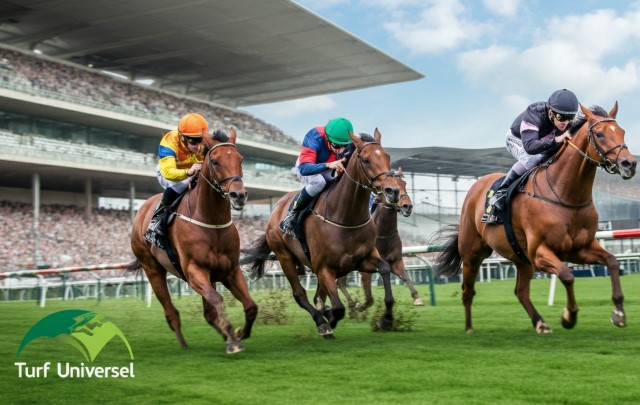Sectional timing is changing the game in horse racing analysis, offering a deeper understanding of a horse’s performance during a race. Whether you’re an avid punter or someone looking to refine their knowledge of the sport, grasping sectional timing is a key step toward making more informed decisions.
This metric has become increasingly popular among bettors and industry professionals, as platforms like Turf Universel now incorporate sectional timing data into their racing insights. But what exactly is sectional timing, and why should it matter to you? By the end of this guide, you’ll understand how to interpret sectional times and use them to your advantage in horse racing events.
What Is Sectional Timing in Horse Racing?
Before we jump into the specifics, it’s important to define sectional timing. Simply put, sectional timing refers to the measurement of a horse’s performance across various segments, or “sections,” of a race. Instead of analyzing the overall time it took to complete the race, sectional timing breaks it down into smaller portions, such as every furlong or specific distances, providing a more granular view of how the race unfolded.
For instance:
- A race might be 6 furlongs long, and sectional timing would give you data for each furlong (e.g., 12 seconds for furlong 1, 11.8 seconds for furlong 2, etc.).
- This insight reveals key information, like when a horse started fast, when it slowed down, or when it powered through its final stages.
The Importance of Sectional Timing
Why does sectional timing matter? For years, horse racing primarily focused on overall race times and finishing positions. While helpful, these metrics don’t tell the complete story. Two horses may finish a race with identical times, but their performance during different sections of the race could vary dramatically.
Here’s why sectional timing is a game-changer:
- Spot the Strategists
Sectional data helps identify horses that conserve energy early on and finish strong, often referred to as “closers.” These horses might have performed poorly in their previous races based on overall metrics but could be solid bets depending on the race distance and track conditions.
- Analyze Early Speed Advantage
On some racecourses, a quick start is critical. Horses that dominate in initial sectionals might be more likely to win when racing on tracks with shorter straights or tighter curves.
- Track Customization
Not all tracks are created equal. Some favor early pace runners, while others suit closers. By understanding sectional timing, bettors can analyze which horses are well-suited to specific track layouts and surface types, such as grass or turf. Platforms like Turf Universel often include this data, offering valuable insights for horse racing enthusiasts.
- Identify Emerging Talents
Sectional times allow you to spot hidden gems. Sometimes, an inexperienced horse might not rank highly based on finishing position but displays excellent bursts of speed during specific sections, signaling potential for future success.
How Sectional Timing Is Measured
The technology behind sectional timing makes all of this possible. Unlike traditional methods, where finishing positions were chiefly recorded manually, modern sectional timing uses advanced tracking tools.
- GPS Technology: Sophisticated GPS systems attached to each horse track their speed and location in real time.
- Beam Sensors: Some tracks employ laser beams at sectional markers, automatically recording the time it takes a horse to pass through specific intervals.
- Radio Frequency Identification (RFID): RFID tags embedded in the horses’ equipment provide precise time and positional data throughout the race.
These technologies ensure highly accurate data, enabling both professional analysts and casual spectators to assess race performance with greater precision.
Using Sectional Timing Data to Enhance Betting
For bettors, the real value of sectional timing lies in how it can be used to refine predictions and improve wagering strategies. Here’s a practical guide to making the most of sectional timing data:
1. Look Beyond the Final Results
Think of the final race result as just one piece of the puzzle. Was the horse stuck in traffic early on? Did it lose momentum due to interference? Analyzing sectional times can reveal whether a horse had the capability to perform better than its results suggest.
2. Find Sweet Spots in Performance
Pay attention to mid-race sectionals. These often highlight horses that maintain a consistent pace or accelerate at crucial moments. A horse with strong mid-sectionals could have the stamina and consistency to outperform competitors in future events.
3. Match Sectionals to Track Conditions
Races run on different surfaces (dirt, synthetic, or turf) require varying strategic approaches. Horses that demonstrate a powerful closing sectional on turf might not fare as well on dirt tracks due to how those surfaces impact speed. Fortunately, databases like Turf Universel make it easy to filter sectional data based on track specifics.
4. Identify Pace Scenarios
If you know how fast the early sections of a race are likely to be, you can predict which horses will benefit most. For example:
- Fast early pace: Look for closers with strong late-sectionals.
- Slow early pace: Give an edge to horses with strong early speeds.
5. Combine Sectional Data With Other Metrics
While sectional timing is insightful, it works best in conjunction with other factors like jockey performance, track bias, and weather conditions. Develop a comprehensive analysis by blending these inputs.
The Role of Platforms Like Turf Universel
If interpreting sectional timing feels daunting, don’t worry. Tools such as Turf Universel simplify the process. These platforms aggregate data not only from sectional times but also from other key performance indicators, providing actionable insights at a glance.
Here’s how Turf Universel can help:
- Displays detailed sectional breakdowns for individual horses across various tracks.
- Offers insights into how a horse’s sectional performance trends over time.
- Customizes filters based on track type, distance, and surface, catering to both beginner and experienced bettors.
By making sectional data more accessible and easier to interpret, Turf Universel empowers users to gain a competitive edge in the high-stakes world of horse racing.
Final Thoughts on Sectional Timing
Sectional timing represents a shift toward a more analytical and data-driven approach to horse racing. Whether you’re a business-minded bettor or a passionate fan of the sport, grasping this concept can radically enhance how you view and analyze races.
With platforms like Turf Universel offering tools to break down sectional timing, even newcomers can confidently interpret this data and apply it in their decision-making. Start by exploring the times of your favorite horses and see how their sectional performance matches your expectations.
The next time you watch a race, go beyond the finish line. Use sectional timing to deepen your understanding, make data-backed wagers, and enjoy horse racing like never before.







